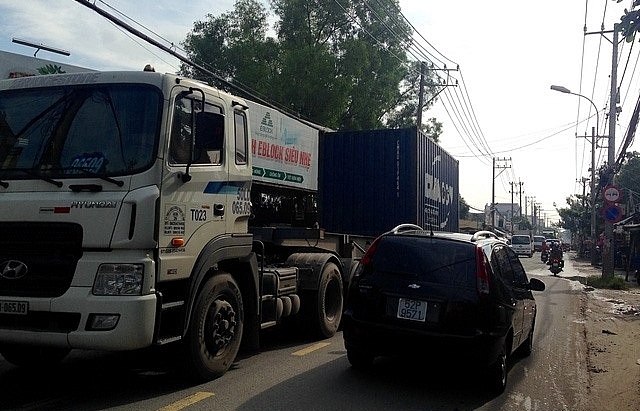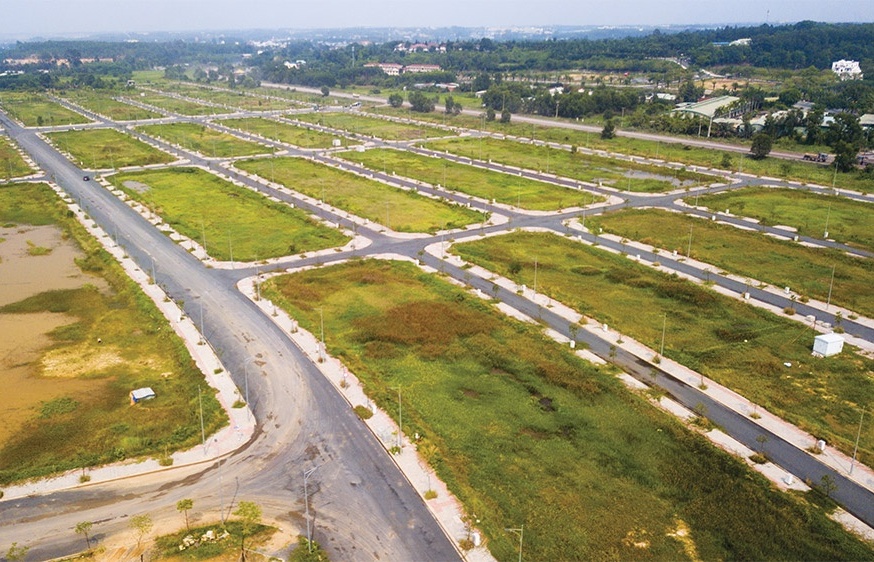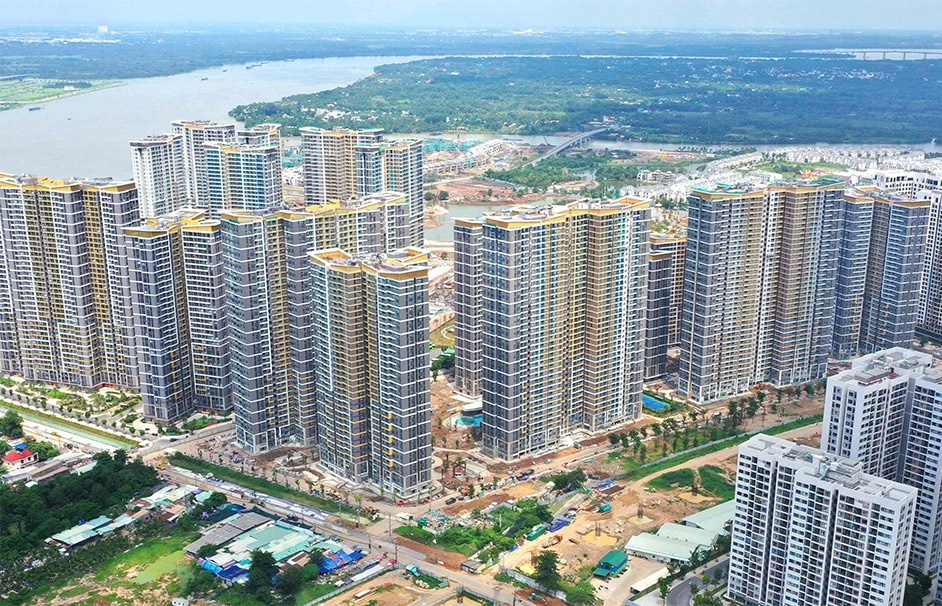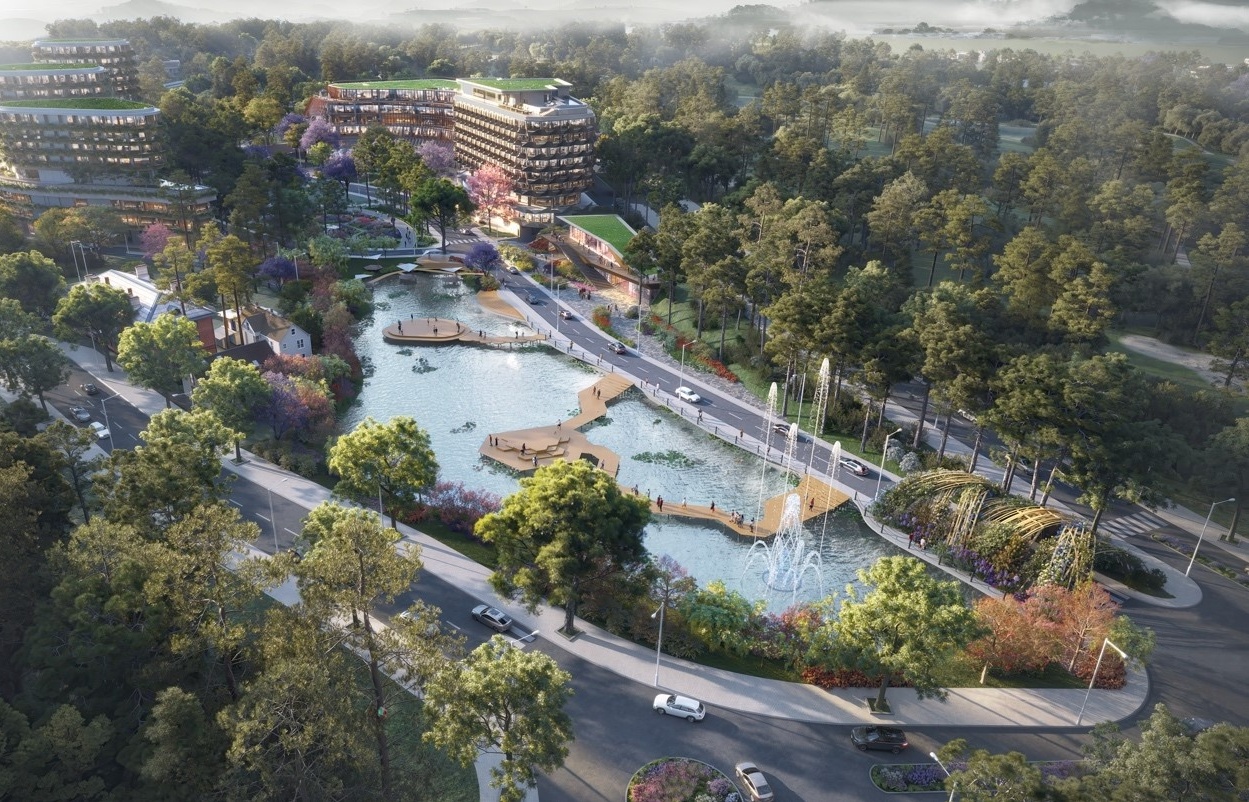Vietnam’s Wall Street emerges
Twelve gold taels (or $9,800) is a price some people would pay for a square metre of land on Nguyen Cong Tru Street, a two-lane road in Ho Chi Minh City.
 Big financial outfits are attempting to open doors on the street |
But, the high prices are for a reason. The land price for houses on Nguyen Cong Tru Street have grown by five times in value compared to that in 2000 because no place else in Vietnam’s biggest economic hub has such a high presence of financiers and bankers.
Today, the 500-metre-long section in this street is the front of several securities companies such as Bao Viet, Dong A, BSC, Saigon, Tam Nhin, Dai Viet, Phuong Dong and Nong Nghiep.
It is also where a lot of finance firms and banks make their presence known, including Bao Minh Insurance, Bao Viet Insurance, BIDV, Viet A Bank and Agribank. This list is lengthened by the representative office of the State Securities Commission.
Nguyen Cong Tru is the central road of the emerging “Wall Street” of Vietnam. This Wall Street is a rectangular area of around 15 hectares shaped at four sides by Ham Nghi Avenue, Ben Chuong Duong Avenue (part of the West-East Highway), Ho Tung Mau Road and Pho Duc Chinh Road.
This area is also the beginning of Pasteur and Nam Ky Khoi Nghia, two main roads in Ho Chi Minh City’s centre.
But, it has not always been on the radar screen of property and financial investors. In 2000, the Asia Wall Street Journal ran a story on the preparation for the birth of Vietnam’s stock market, mentioning geographical and historical aspects of this “Wall Street.”
The story’s view was inclined to focus more on the untidiness in front of the Ho Chi Minh City stock exchange caused by the unemployed and idle.
But, Ho Chi Minh City is a strange place where change happens fast. At the “Wall Street” area, most of the locals remain surprised by the changes it has brought them during the past two years.
In Nguyen Cong Tru Street, the transaction floor of Saigon Securities Incorporation (SSI) is the widest, best designed and most crowded. It occupies a space rented from Vietnamtourism. When Vietnamtourism was equitised, the space seemed to belong to SSI. Yet recently, a property project there has turned out to be in the hands of a company based in Hanoi.
Two months ago, a stock investor bought a street-front house with a 4m width in Nguyen Cong Tru Street for 1,000 gold taels ($812,000). It is rumoured that a series of domestic financiers such as Dong A Bank, Vien Dong Insurance and Nam Viet Bank as well as foreign financiers have intended to annex private houses in this street to build their head offices.
Late in 2006, Dai Viet Securities Company (DVSC) moved its spacious head office in Pasteur Street to the Savimex Building in Nguyen Cong Tru Street. The outcome is clear. The number of customers who come to open accounts at DVSC has grown by two to three times every month and DVSC decided to open another 400sqm transaction floor to serve the investors. Thus far, though operational for nearly one year, DVSC has 5,000 accounts in which 70 per cent carry out regular transactions. Thus far, the seven-storied Savimex Building, which was built in the 1990s, has been much more appreciated being home to four securities companies and a bank branch.
Besides new restaurants and a contingent of xe om drivers and vehicle keepers, one can see some houses in Nguyen Cong Tru Street have changed with their owners.
DVSC director Bui Van Tuynh said to occupy a large area in this street, one must buy one house after the other with long negotiations and high prices. However, many investors are still queuing to buy houses here and that means the position of this financial centre is irreplaceable. Despite of historical ups and downs, this “Wall Street” remains a promising land for financiers. Nearly one century ago, HSBC built its office in this area and this building is now in the hands of the State Bank. The East-West Highway project has been finalised, which will boost the Ho Chi Minh City stock exchange. By the end of 2008, a tunnel road passing the Saigon River and linking District 1 with the Thu Thiem new urban area in District 2 will be completed. One end of this road in District 1 is “the Wall Street.” When the annexation of this area by financial groups comes to an end, it is likely that the space alongside Nguyen Cong Tru Street will develop strongly.
What the stars mean:
★ Poor ★ ★ Promising ★★★ Good ★★★★ Very good ★★★★★ Exceptional
 Tag:
Tag:
Related Contents
Latest News
More News
- Stabilising measures must sit alongside land price hikes (November 07, 2024 | 09:56)
- CapitaLand Development records strong bookings for Orchard Hill (November 07, 2024 | 08:19)
- Public transport and real estate: The rise of Transit Oriented Development (November 05, 2024 | 15:06)
- Funding flows to second-tier localities (November 03, 2024 | 15:24)
- Hanoi has long road to travel in becoming a smart city (November 03, 2024 | 15:00)
- Nam Long Group hands over keys to Akari City Phase 2 (October 30, 2024 | 18:29)
- KTG Industrial expands industrial footprint at Taitronics 2024 (October 29, 2024 | 14:46)
- Deal signed for sustainable development at Prodezi Eco-Industrial Park (October 26, 2024 | 10:02)
- Metro lines push up real estate prices (October 24, 2024 | 15:44)
- Mitsubishi Estate expands with Logicross Nam Thuan in Long An (October 23, 2024 | 08:00)
















 Mobile Version
Mobile Version